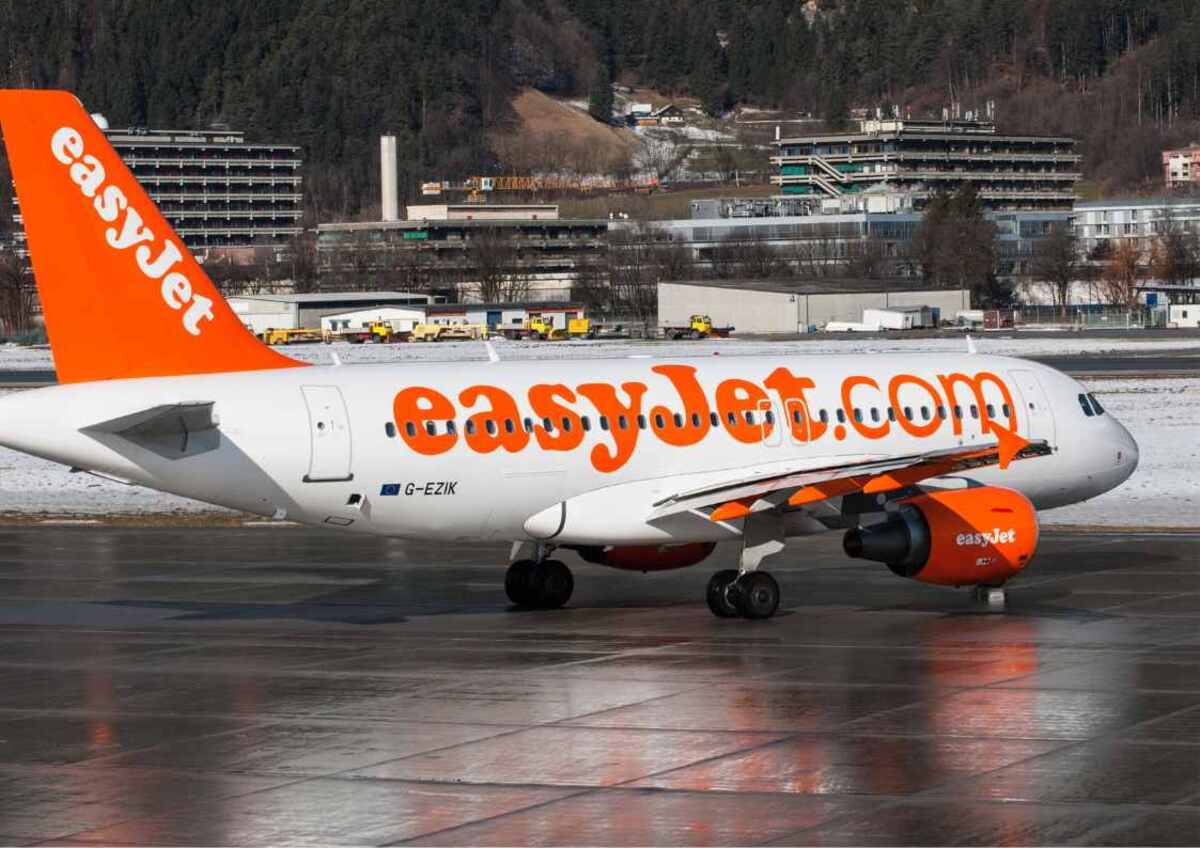Friday Dec 22 2023 06:21

8 min

EasyJet PLC is a British low-cost airline that has been a trailblazer in affordable air travel across Europe.
With a commitment to providing excellent service while keeping costs down, the company has successfully democratized air travel for millions.
This article delves into EasyJet's history, operations, financial performance, and key trends shaping the industry and the corporation today.
EasyJet was the brainchild of Greek Cypriot businessman Sir Stelios Haji-Ioannou. The airline was established in 1995, to make air travel accessible to everyone through low fares.
It started with just two leased Boeing 737-200 aircraft flying between Luton and Glasgow, and Amsterdam and Edinburgh.
Over the next couple of years, easyJet demonstrated its forward-thinking approach to business by smartly leveraging technological innovations. It was among the first airlines to sell seats online in 1998, abandoning the traditional ticket system.
This not only reduced operational costs, but it also enabled easyJet to continue driving down passenger fares thereby fulfilling its underlying mission.
Since then, EasyJet has experienced significant growth and expansion. From its humble beginnings, it has expanded into a fleet of over 330 aircraft, serving over 1,050 routes in more than 30 countries.
Central to its success has been a commitment to maintaining operational efficiency. EasyJet operates a single aircraft type from the Airbus A320 family, which streamlines everything from crew training to maintenance and scheduling.
Notably, the company has also strategically chosen secondary airports. These airports usually have lower fees and less congestion, allowing the airline to achieve faster turnaround times, a critical factor in maintaining profitability with low-fare models.
Furthermore, the point-to-point business model, as opposed to the traditional hub-and-spoke model, helps the company optimize the aircraft utilization time and maintain low operational costs.
EasyJet's initial marketing approach was centred around making air travel as accessible and affordable as a common clothing item. This was symbolized in their slogan and minimalistic advertising featuring their contact number on their brightly coloured planes. The colour choice led to a legal tussle with a telecom firm when EasyJet expanded into mobile services.
The brand's visibility significantly increased in the UK due to the "Airline" TV series, despite mixed portrayals. Over time, EasyJet has used various catchy slogans to reflect its evolving brand, culminating in the current slogan that resonates with a modern, dynamic generation of travellers.

EasyJet PLC's financial performance reflects a complex interplay of consistent growth, industry challenges, and strategic responses. The company has historically seen revenue growth, largely due to an increasing number of passengers and the expansion of ancillary services.
This growth, however, has been subject to fluctuations influenced by external factors like fuel costs, currency exchange rates, and geopolitical events, including Brexit's impact on the travel sector.
The advent of the COVID-19 pandemic marked a significant challenge for EasyJet, mirroring the broader struggles of the airline industry. With travel restrictions and a drastic reduction in passenger demand, the company faced substantial operational disruptions.
This led to EasyJet reporting its first annual loss in the fiscal year 2020, a stark contrast to its previous financial trajectory.
In response to these unprecedented challenges, EasyJet embarked on a series of cost-cutting measures. Key among these were reducing its workforce and scaling back its fleet, demonstrating the airline's adaptability in navigating financial and operational hurdles.
These strategic responses were critical for EasyJet to maintain its financial stability and position itself for recovery post-pandemic. The company's ability to adapt to these changes shows resilience and a proactive approach to managing external pressures and uncertainties inherent in the airline industry.
EasyJet has not just adapted well to the volatile aviation industry landscape but also pioneered the shaping of a few critical trends.
The company has helped redefine customer expectations from low-cost airlines. While the core strategy revolves around delivering affordable flight options, the corporation doesn't compromise on safety or service quality. They continue to place a strong emphasis on punctuality and reliable service, which has been crucial in attracting and maintaining a loyal passenger base.
Furthermore, recognizing the increasing importance of sustainability in the travel industry, EasyJet has announced a commitment to achieving net-zero carbon emissions from all its flights. The company began offsetting all jet fuel emissions in 2019 making it the first major airline in the world to operate carbon-neutral flights across its entire network.
To continue achieving commercial success while also promoting sustainability, easyJet is actively reviewing potential technological advancements. This includes examining the prospects of electric and hydrogen planes and hybrid aircraft.
EasyJet is steering towards a sustainable and technologically advanced future in aviation. They aim for net-zero flying by 2050, leveraging innovations such as ergonomic sensory seats, biometric passports, and in-flight entertainment beamed directly to passengers.
Additionally, advancements in accommodation, like 3D-printed food and energy-efficient subterranean hotels, are forecasted.
The comprehensive "easyJet 2070: The Future Travel Report" encompasses these futuristic concepts and more, highlighting the airline's vision for travel in 50 years.

As of the close on December 7, 2023, EasyJet's share price was 478.20p for selling and 478.40p for buying. The change from the previous close was a slight increase of 0.99%. For a broader perspective on their financial performance, EasyJet PLC has been trading below its 52-week high of 582.71p, with the share price having seen various fluctuations throughout the year. The company's market capitalization is currently around £3.62 billion, and the trading volume on that day was 386,324 shares. These figures provide a snapshot of the company's recent stock market performance
EasyJet PLC has transformed the aviation sector since its founding in 1995, combining affordable fares with consistent service and punctuality. As we move into an increasingly digital, environmentally conscious age, the company is well-positioned to leverage its innovative spirit and adapt to a rapidly evolving airline landscape.
Through resilience and ambition, EasyJet continues to provide essential connectivity within Europe, proving that low cost doesn't have to mean low quality.
Learn and trade with markets.com, the ultimate trading community.
“When considering “CFDs” for trading and price predictions, remember that trading CFDs involves a significant risk and could result in capital loss. Past performance is not indicative of any future results. This information is provided for informative purposes only and should not be considered investment advice.”